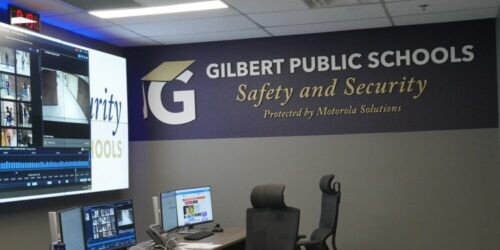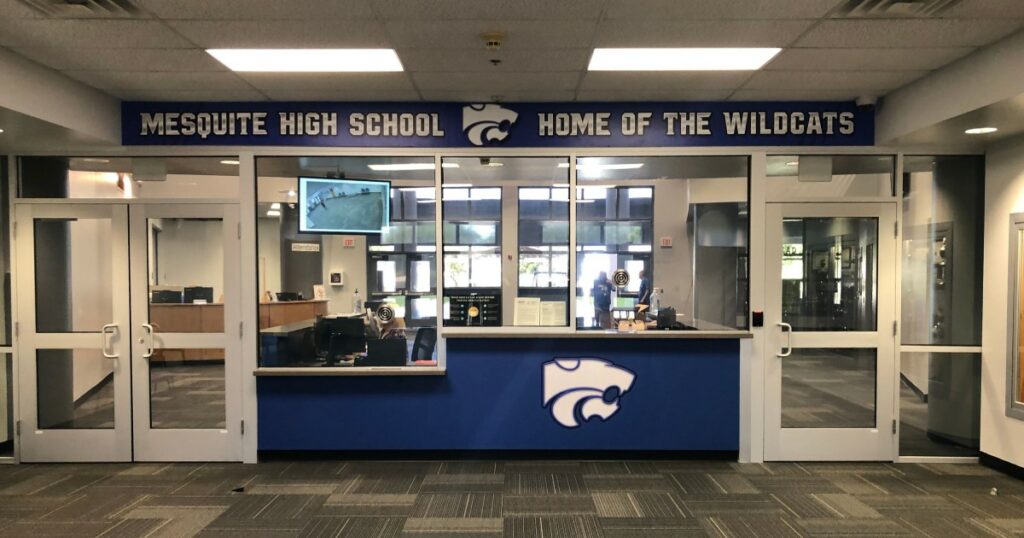
9.26.22 -SSI – Scott Goldfine
Managers from three customer markets deliver keen insights to give integrators a better perspective on how today’s commercial customers think and what they really need most.
The level of security and safety desired by security directors throughout their respective organizations entails input, coordination and support from all levels internally and among key external contributors — including systems integrators.
“The biggest thing is having a technology integrator that understands we’re putting a piece of technology in here because we have a problem,” says Anthony Pluretti, executive director of campus safety at Widener University of Greater Philadelphia. “I want to make sure they fully understand it and that the solutions and resolutions they’re bringing forward actually achieve the solution of that problem. And maybe they as well offer some type of auxiliary services for that location.”
Pluretti, who in addition to technology decisions oversees approximately 75 officers for a college campus with an enrollment of nearly 3,000 students, is among the three security directors featured in SSI’s 2022 Security End-User Forum. Also included in the roundtable interview were Virtua Health Assistant Vice President for Safety, Security and Emergency Management Paul Sarnese and Gilbert (Ariz.) Public Schools Security Director Allen Cain, a longtime former policeman.
Southern New Jersey’s Virtua employs some 15,000 people, about 275 of whom are security officers, and the Gilbert District includes 39 schools.
Touching on awareness of various security systems and solutions, interest and intent on exploring or expanding safety and security, histories with security providers and what they look for in such vendors, impact of the pandemic and supply chain are discussed. The objective is to help integrators gain a better perspective on how today’s commercial customers think and what they really need most.
What are the top three security or safety challenges right now within your organization?

Anthony Pluretti: The challenges are always changing. In our position, we have to always be the most adaptable and pivot quicker than anyone else. At Widener University, we’re looking at the safety of our institution in the physical realm regarding the community around it. In higher ed, very few of us get lucky to be placed in a community where there’s very low crime in the neighborhood that surrounds the institution.
The biggest challenge is not only are you trying to keep the community safe from itself internally, but also trying to have some type of territorial reinforcement that protects the community from people coming into it and committing crime or crime bleeding into the area.
Surveillance systems are always going to be a challenge. The more technology you implement, the more technology that can break or get outdated or need service. We have a relatively small to medium-sized surveillance system, about 450 cameras. Making sure they are always online, always looking at the right place and are the right solution for the job, making sure that when they do go down, they get back up as quickly as possible is always going to be a challenge.
Same with card readers and stuff like that. Not only that, but also constantly trying to optimize and update that as new technologies come out so we have the right technology for the problem.
Then everyone, post-pandemic and with the Great Resignation, is dealing with staff shortages and how to remain competitive as inflation continues to go up and pay is going to have to continue to go up. All of us have margins. It’s difficult to maintain that as it’s changing every day in what’s needed to be competitive.

Paul Sarnese: COVID certainly forced migration of a lot of people outside of healthcare. Staffing and recruiting have really been a challenge. Every business is a microcosm of society and we’re seeing an increase in violence in society. Look at the airline industry and the increase in assaults they have experienced the past 12 months. We’re seeing the same thing in healthcare. But violence in healthcare is nothing new. Healthcare employees are four to five times more likely to be a victim of aggravated assault than any other industry. Those things don’t positively effect on ability to recruit and retain people.
As my friend says, “We’re all fishing from the same pier when it comes to recruiting for security officers, and the pool is getting a little shallow.” Then because of the financial impact COVID had on healthcare organizations, certainly safety and security, we’re competing for the same capital and infrastructure and operating dollars as everybody else. We have to be good salesmen. We have to justify any new expenditure we want to implement, if it’s a system or a process or whatever it may be. We’re competing with others looking for the same dollars for maybe clinical equipment that’s the latest, greatest technology to heal a particular disease.

Allen Cain: I could probably give you a list of 20 or 30 or so challenges. When I took this role more than four years ago, I came into the organization thinking I was going to tweak what they had in place. However, I quickly realized the school district was way behind probably the rest of the country in regard to safety and security. I spent my first two, three weeks going through the whole school district and doing my own threat assessment, figuring out where our weaknesses was, our vulnerabilities. In turn, I built my wish list. The top three things were fencing around our campuses, the camera technology and secured entryways into the front of our schools.
Let’s get deeper into the weeds of the security solutions presently deployed by your organizations.
Pluretti: We use a local technology integrator called NextGen, and they’ve been great. We use Genetec as our video management system and interface. We have a couple of upgrades inside of Genetec we’ve implemented the past couple years that have been key to making our camera system a little bit more usable and user-friendly for our staff. We use C-CURE for all of our card access control. Alarm Center is a local solution with double alarms, which utilizes our Silent Knight fire panel also on campus.
We use ARMS for our records management system, including CAD, parking, property management and recordkeeping for our officers and incident reports. We use Enterprise Fleet Management for all the institution’s vehicles. We have electric vehicles, so I’m using Enphase for all of our GEM cars and energy management solutions and monitoring. Then our mass notification vendor is Omnilert, and we’re working with them to develop some custom solutions and have done some upgrades over the years as well.
Sarnese: For our access control system, we use IDenticard’s PremiSys, and we’ve been successful interfacing that with our video management and infant abduction systems. For our video management system, we use the Hanwha Techwin product. For our infant abduction, we use Hugs. They all interface. When a panic button is pushed and activated, our access control system pops up a dialogue box that says panic button has been activated at the cashier on the second floor.
The video management system pops up 10 seconds of recorded video prior to the pushing of the panic button while we’re looking at the actual video of that area. Then it provides our staff with directions to respond. With Hugs, not only does it lock down doors upon activation, it also pops up cameras, locks down our elevators and locks doors and so forth. There’s a lot of touch-and-go systems there.
We use Everbridge as our mass notification system. We’ve been very successful using that during COVID, now during monkeypox, and other threats we’ve had throughout the organization. It’s a really good tool to be able to push information out quickly. We actually just started utilizing their Safety Connect piece, which is for our staff that is working in the community. It’s basically a panic button on your mobile device. It provides a virtual escort as well as literally a panic button that will notify the local police department in that geographical area.
As our incident reporting system, we’re currently using RL Solutions. Right before COVID, we implemented another mobile solution, which we’ve gotten a lot of great feedback from our employees, called My-EOP. It allows us to put our emergency operations plan or any type of emergency information at the fingertips of our employees, literally right on their phone. Our entire emergency operations plan is on there. All of the incident action plans, our incident command system forms, emergency supplies, emergency contacts, that information is there.

The Gilbert Public School District in suburban Phoenix is in the process of substantially upgrading security and safety systems throughout its 39-school contingency.
Cain: When I came into the situation, we had a hodgepodge of camera systems around the school district. Each school was using some-thing different — some were so outdated that they had been purchased many years ago at RadioShack. I quickly learned we needed an enterprise system around the district that was all interconnected, integrated together. We went out for a bond with the local voters, the taxpayers, and we were successful in that bond. We garnered the money that we needed for the project. Through a lengthy RFP program, we ended up hiring a local integrator who we’ve been lucky with. They’ve been phenomenal.
We went with the Motorola product, Avigilon, for the camera systems. We’re still in the infancy stages of the installation. Out of 39 schools, we’re right now at about seven schools completed. They’re presently working on our district office. Our goal is by within the next year-and-a-half to two years having all 40 schools completed, all integrated. Each site will be able to review their own cameras with all the schools being fed to my office, a command center, security operations center, all being fed to here.
We have card access at some locations, not everywhere. That’s another bid process we’re looking at. I’m hoping whatever system we end up going with integrates in with our camera system so they all work flawlessly together. Another topic on my wish list is secured entryways at the schools. We have five complete with three being worked on right now.
In that secured entryway is a Raptor system we use for visitor management. We use that to vet visitors to our campus, and for the sites that do have them it’s integrated throughout the district. For the alarm systems, we use Bosch combined with BoldNet so we can control the alarms at night. The card access system we presently use, and I don’t know if we’re staying with it, is Lenel OnGuard. For our mass notification system, we’re using InformaCast, which we do through our Cisco phones.
Pages 1 of 2 Next
Tagged with: Campus Security Commercial End-User Study Commercial Market Access Control Business Fire & Intrusion In-Depth Industry News Systems Integration Video Surveillance
About the Author

SCOTT GOLDFINE, Editor-in-Chief and Associate Publisher
Scott Goldfine is Editor-in-Chief and Associate Publisher of Security Sales & Integration. Well-versed in the technical and business aspects of electronic security (video surveillance, access control, systems integration, intrusion detection, fire/life safety), Goldfine is nationally recognized as an industry expert and speaker. Goldfine is involved in several security events and organizations, including the Electronic Security Association (ESA), Security Industry Association (SIA), Security Industry Alarm Coalition (SIAC), False Alarm Reduction Association (FARA), ASIS Int’l and more. Goldfine also serves on several boards, including the SIA Marketing Committee, CSAA Marketing and Communications Committee, PSA Cybersecurity Advisory Council and Robolliance. He is a certified alarm technician, former cable-TV tech, audio company entrepreneur, and lifelong electronics and computers enthusiast. Goldfine joined Security Sales & Integration in 1998.
